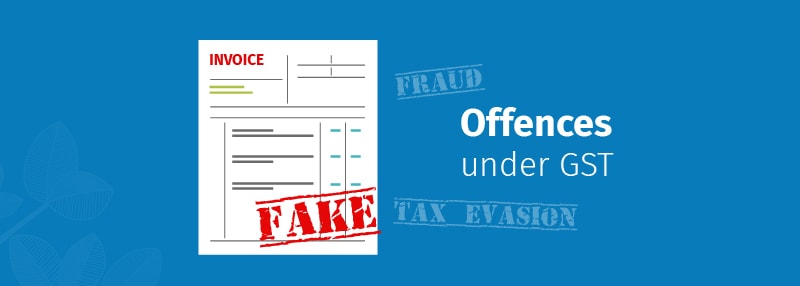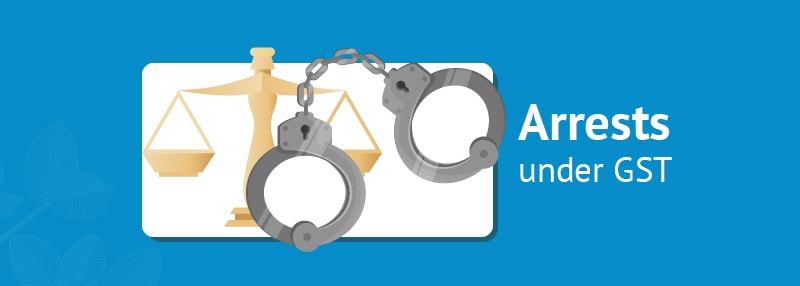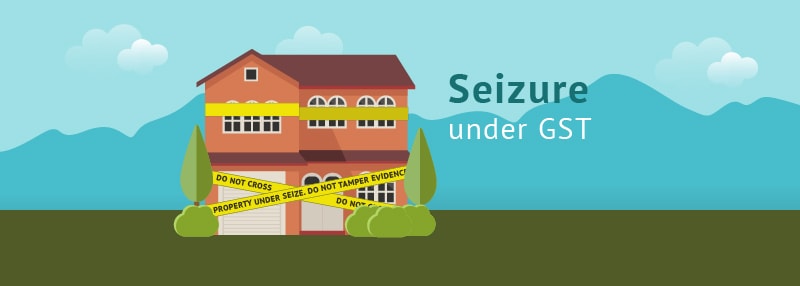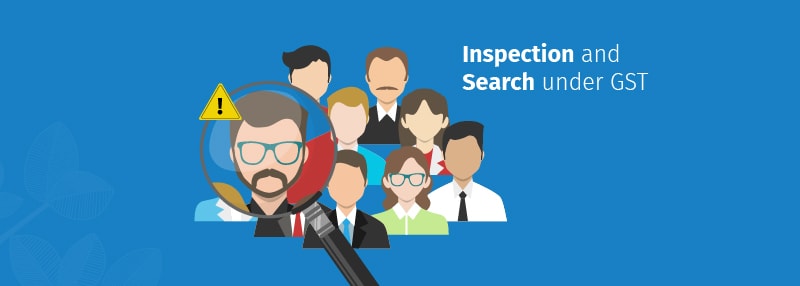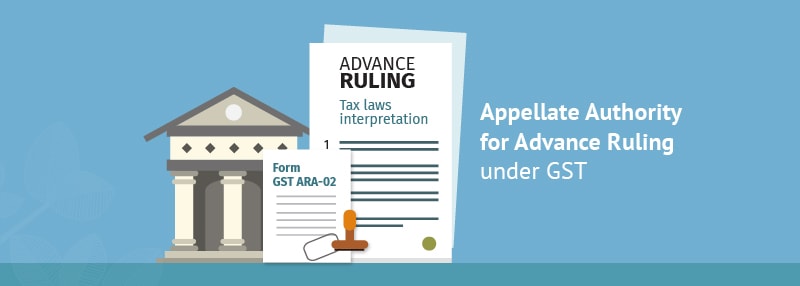GST Procedures
Sahaj GST Returns – Form GST RET-2
By Introducing different return forms for different types of business, the new GST return system aims to simplify the filing process for business registered under GST. Sahaj GST return is one such form among the several types of new GST returns to be introduced.
In this blog, let us understand all about the Sahaj GST returns right from its applicability, periodicity of return filing, payment of tax and return filing process.
What is Sahaj return in GST?
Sahaj is a type of GST returns for small taxpayers whose aggregate turnover in the financial year does not exceed 5 Crores and their outward supplies are of B2C nature i.e. outward supplies are made to end consumers and unregistered business.
Applicability of Sahaj return
The criteria to decide on the applicability of the return depends on the aggregate turnover and types of outward supplies you make.
- The aggregate turnover in the previous financial years is up to 5 crores
- You are engaged in making only B2B supplies (Unregistered Business and end consumers)
If you satisfy the above two conditions, you will have an option to file Sahaj GST returns.
Periodicity of filing Sahaj return
The periodicity of Sahaj return filing is on a quarterly basis. However, the payment of tax should be made on a monthly basis.
For businesses opting Sahaj GST return, the due date to file a quarterly return is 25th of the subsequent month following the quarter-end. Following are due date for filing Sahaj returns.
| Due Date to File Sahaj GST Return | |
| Quarters | Due Data |
| April -June | 25th July |
| July – September | 25th October |
| October- December | 25th January |
| January-March | 25th April |
Due date for payment of tax
Taxpayers opting Sahaj return are required to make the monthly payment though the return filing periodicity is quarterly. The payment of tax is on the self-assessed basis and should be made through a payment declaration form known as Form GST PMT-08. The due date for monthly payment of tax for Sahaj return is 20th of succeeding month.
The self-assessed payment is required only for 1st and 2nd month of the quarter and for 3rd month, payment along with all adjustments should be made along with the returns.
Sahaj return filing process
The Sahaj GST return consist of one main return, to be filed on a quarterly basis supported by two main annexures. Form GST RET-2 is the return form to be used to file Sahaj returns supported by the annexures.
The details of return forms and annexures to be used for filling Sahaj return is given below.
| Form | Description | Action |
| Form GST ANX- I | Form GST ANX-1 is an annexure of outward supplies and inward supplies attracting reverse charge. | You need to upload details of outward supplies along with purchases attracting reverse charge in FORM GST ANX – 1 |
| Form GST ANX – II | It’s an annexure containing details of auto-drafted inward supplies.
|
Form GST ANX-II is an auto-populated annexure containing the details document uploaded by your supplier on a real-time basis.
Here you can either accept, modify or reject the invoice uploaded by your counterpart (seller) for confirming the ITC. |
| Form RET-2 | Form RET-02 is a quarterly return applicable for business opting Sahaj returns (Up to 5 Crores) | Business need to file the monthly return by 25th of the subsequent month following the quarter-end |
New GST Mechanism Implementation: A Timeline
The recently held 31st GST council meet came up with a decision a new GST return system will be introduced to facilitate taxpayers. To initiate a smooth transition to the newly introduced return system, a transition plan has been laid out. Unveiling a roadmap for the implementation of the new GST mechanism, the Finance Ministry transition plan will come in subsequent phases. Here are the details of the indicative transition plan:

May 2019:
To understand the interface and ease of transition, a prototype of the offline tool has been shared with the taxpayers. While the navigation of both online and offline tools is similar, taxpayers need to be aware that there are three main components to the new return – one main return (FORM GST RET-1) and two annexures (FORM GST ANX-1 (Sales) and FORM GST ANX- (Purchases)).
July to September 2019:
From July 2019, for to get familiarised, users will be able to upload invoices using the FORM GST ANX1 offline tool on trial basis. They can also view and download, the inward supply of invoices using the FORM GST ANX-2 offline tool under the trial program. The summary of inward supply invoices will also be available for view on the common online portal. In addition to this, August onwards, users can easily identify mismatches by importing their purchase register in the offline tool and match it with the downloaded inward supply invoices. July to September will be defined as a trial period for taxpayers. Since this is only to get the taxpayers familiarised with the tool’s interface, their entries would have no impact at the back end on the tax liability or input tax credit of the taxpayer. In this period, taxpayers will continue to file existing return forms (GSTR-1 and GSTR-3B). Taxpayers will be penalised if they fail to file their GST returns on time.
October to November 2019:
October 2019 onwards FORM GSTR-1 will be replaced by FORM GST ANX-1 and will mark the emendation of FORM GST ANX-1. Actions for both large and small taxpayers will be difference in the coming months.
For Large taxpayers, whose aggregate turnover in the previous financial year over Rs 5 crores:
- They would upload their monthly FORM GST ANX-1 from October 2019 onwards.
- For October and November 2019, they would continue to file FORM GSTR-3B on monthly basis.
- They would file their first FORM GST RET-01 for the month of December 2019 by 20th January 2020
For Small Taxpayers with an aggregate of up to Rs 5 crores:
- The first compulsory quarterly GST ANX-1 will be due only in January 2020, for the October-December 2019 quarter
- They will stop filing GSTR-3B and start filing GST PMT-08 from October and file their first GST RET-01 for the quarter October-December from January 20, 2020.
While invoices can be uploaded in GST ANX-1 on a continuous basis, both by large and small taxpayers, from October, GST ANX-2 can also be viewed simultaneously during this period but no action will be allowed on it.
January 2020:
From January 2020 onwards, all taxpayers shall be filing FORM GST RET-01 and FORM GSTR-3B shall be completely phased out.
Note: Instructions to file and process the refund applications between October to December 2019 will be notified shortly
Prosecution and Compounding under GST
Prosecution under GST
Prosecution, is defined as the act of conducting legal proceedings against someone, in respect of a criminal charge. Under GST, any taxable person who commits an offence amounting to deliberate intention of fraud, becomes liable for prosecution, or in other words, criminal charges.
Offenses liable to attract Prosecution under GST
The following are the offences, for which a taxable person can become liable for prosecution under GST:
- Supply of any goods and / or services without an invoice, in order to evade taxes
- Issue of any invoice without the supply of any goods and / or services, thus taking ITC or refund by fraud
- Collection of GST (even if it is done against the provisions), but failure to submit the same to the government, within the specified time limit of 3 months
- Obtaining of refund of CGST / SGST by fraud
- Submission of fake records or documents or filing of fake returns to evade taxes
- Obstruction of the proper officer during his duty, for instance, while conducting audit
- Acquisition or receipt of any goods and / or services with full knowledge that it is in violation of the GST rules, and is liable for confiscation
- Destruction of evidence
- Not providing information or providing false information during proceedings
- Helping any taxable person to commit fraud
Punishment for Prosecutable Offences
As per the provisions of prosecution in GST, the taxable person committing any of the above listed offences i.e. prosecutable offences shall be punished as follows:
| Amount of Tax Involved in Offence | Bail Applicability | Term of Jail |
| INR 100 to 200 Lakhs | Bail-able | Up to 1 year |
| INR 200 to 500 Lakhs | Bail-able | Up to 3 years |
| Above INR 500 Lakhs | Bail-able* | Up to 5 years |
*Note: However, if a taxable person commits the following offences and the amount of tax involved in the offence exceeds INR 500 Lakhs, then the offences will be deemed as non-bail-able:
- Supply of any goods and / or services without an invoice, in order to evade taxes
- Issue of any invoice without the supply of any goods and / or services, thus taking ITC or refund by fraud
- Collection of GST (even if it is done against the provisions), but failure to submit the same to the government, within the specified time limit of 3 months
Other specified punishments for Prosecutable Offences
- For obstruction of the proper officer during his duty, destruction of evidence, falsifying information during proceedings & helping another taxable person to commit fraud – Up to 6 months imprisonment with fine
- Repeat Offences – Up to 5 years imprisonment with fine
Compounding under GST
Compounding of offences under GST is a method, wherein litigation time, and time of judicial procedures can be cut down. Generally, in the case of prosecution for an offence in a criminal court, the accused has to appear before the Magistrate at every hearing by using the services of an advocate. Given, that court proceedings are both expensive and time-consuming, the accused taxable person may make use of the compounding provisions under GST, wherein, he will not be required to appear in Court personally. Also, under the same provisions, he may be discharged on the payment of a compounding fee, which will not be more than the maximum fine which can be levied under the relevant provisions of prosecution and compounding under GST.
However, compounding under GST will not be available to the following entities:
- Any taxable person who has already committed any of the offences mentioned under prosecution, detailed above i.e. repeat offenders
- Any taxable person who has committed an offence involving supplies above INR 1 Crore and has been allowed to compound before
- Any taxable person who is also being tried under other acts such as Narcotic Drugs Act, FEMA etc.
- Any taxable person convicted by a court under GST
- Any taxable person guilty of destruction of evidence, falsifying information during proceedings or preventing an officer from doing his duty
Amount Payable for Compounding under GST
Compounding in GST will be allowed only after the full payment of all taxes, interests and penalties which are due. As per the provisions of prosecution and compounding under GST, the amount payable for compounding under GST is defined as follows:
- Minimum Limit – 50% of the tax or INR 10,000 whichever is less
- Maximum Limit – 150% of the tax or INR 30,000 whichever is more
On payment of the compounding amount, no further proceedings shall be initiated against the accused taxable person for the same offence and all criminal proceedings, if already initiated, will be abated immediately. In conclusion, to avoid any kind of loss, businesses should be aware of the functioning of prosecution and compounding under GST.
Offence under GST
Offence under GST
An offence is defined as a breach of a law or rule, i.e. an illegal act. Similarly an offence under GST is a breach of the provisions of the GST Act. There are 21 offences under GST, which we have classified under the following sections, for your easy reference:
Fake or Incorrect Invoices / Bills
A taxable person indulges in the following GST offences:
- Supplies any goods / services without any invoice or issues a false invoice
- Issues any invoice or bill without supply of goods and / or services in violation of the provisions of GST
- Issues invoices using the identification number i.e. GSTIN of another bona-fide taxable person
Fraud
A taxable person indulges in the following offence under GST:
- Submits false information while registering under GST
- Submits fake financial records or documents or files fake returns to evade taxes
- Does not provide information or provides false information during proceedings
Tax Evasion
A taxable person indulges in the following offences under GST:
- Collects GST, but does not submit it to the government within 3 months
- Collects GST by breaking the provisions, but fails to deposit it to the government within 3 months, which will still be treated as an offence under GST
- Obtains refund of any CGST / SGST by fraud
- Takes and / or utilizes ITC without actual receipt of goods and / or services
- Deliberately suppresses his sales to evade taxes
Supply or Transport of Goods
A taxable person indulges in the following offences in GST:
- Transports goods without proper documents
- Supplies or transports goods, which he knows will be confiscated
- Destroys or tampers goods which have been seized
Other offences under GST
A taxable person:
- Has not registered under GST although he is required to register under the law
- Does not deduct TDS or deducts less amount than what is applicable
- Does not collect TCS or collects less amount than what is applicable
- Takes or distributes input tax credit in violation of the rules, being an Input Service Distributor
- Obstructs the proper officer during his duty, for instance, during audit
- Does not maintain all the books that he is required to maintain under the law
- Destroys any kind of evidence
For all the 21 offences in GST listed above, penalty will be a minimum of INR 10,000, with variations in place, depending of the nature of the offence under GST.
Arrest under GST
Arrest under GST
The term ‘Arrest’ has not been defined in the CGST / SGST Act. However, as per the law, it basically implies the taking into custody of a person under some lawful command or authority. In other words, a person is said to be arrested when he is taken and restrained of his liberty by power or colour of lawful warrant.
If the Commissioner of CGST / SGST believes that a person has committed an offence, he can be arrested by any authorised CGST / SGST officer. The arrested person will be informed about the grounds of his GST arrest motion, and he will appear before the magistrate within a period of 24 hours, in case the offence is of a cognizable nature.
As per the arrest provisions under GST, the following officers have been empowered and are required to assist the CGST / SGST officers in the execution of an arrest under GST:
- Police
- Railways
- Customs
- Officers of State / UT / Central Government engaged in collection of GST
- Officers of State / UT / Central Government engaged in collection of land revenue
- All village officers
- Any other class of officers as may be notified by the Central/State Government
Note: Here, it is important to note the difference between a cognizable and a non-cognizable offense. Cognizable offenses are those where the police can arrest a person without any arrest warrant, i.e. the offense is clear enough. Examples could be murder, robbery, counterfeiting etc. Non-cognizable offenses are those, where a police officer cannot arrest a person without a warrant issued by a competent authority. They are relatively less serious crimes like public nuisance, assault etc.
Offenses which warrant Arrest under GST
The following are the offenses, for which the arrest provisions under GST become applicable:
- When a taxable person supplies any goods or services without any invoice or issues a false invoice
- When a taxable person issues any invoice or bill without supply of goods / services in violation of the provisions of GST
- When a taxable person collects GST, but does not submit it to the government within 3 months
- When a taxable person has already been convicted earlier under the same provisions i.e. this is his 2nd offense
To sum up the offences which warrant arrests, broadly it may be said, that if tax evasion is more than INR 100 lakhs i.e. INR 1 Crore, or when a person has committed his 2nd offense (i.e. first arrest under GST has occured already), an arrest will be made.
Procedures related to Arrest under GST – Points to Note
The following are certain key procedures that you should note with regards to arrest provisions in GST:
- Cognizance of Offense – A court cannot take cognizance of any offense punishable without the prior permission of the designated authority. Only a Magistrate of the First Class (and above) can conduct the trial for such an offense.
- Availability of Bail – Bail is available only for non-cognizable and specified bail-able offenses.
- Summons – A proper officer can summon any person to provide evidence or to produce a document. Any person summoned, has to either attend the summon himself, or send an authorized representative. Both entities will appear under oath.
Taking a holistic view of inspection, search, seizure and arrest under GST, it can be concluded that the government as well as the GST body have well defined arrest provisions in GST, to restrict tax evasion activities across the nation. Given the stringent nature of these offenses, which attract sizeable penalty, taxpayers would hopefully be discouraged from engaging in any illegal business practices.
Seizure under GST
Seizure under GST
The term “Seizure†has not been specifically defined under GST. In legal terms, seizure under GST implies the act of taking over something or someone by force through a legal process, such as, the seizure of evidence found at the scene of a crime. It generally means – taking possession forcibly against the wishes of the owner.
Difference between Detention and Seizure under GST
In this context, most taxable persons may be confused about the difference between detention and seizure under GST. Detention is basically the act of not allowing the owner any access to the seized goods under GST, by means of a legal order or notice. In case of a detention, the ownership and possession of goods still lie with the owner, and it is issued, only when it is suspected that the goods are liable for confiscation.
However, seizure is actually taking over or possessing the goods by the department, although the ownership stays with the owner. A seizure under GST can be made only after inquiry or investigation that the goods are liable to confiscation.
Procedure for Seizure under GST
The following are the provisions pertaining to seizure of goods under GST:
- The proper officer will give an order of seizure of goods under GST in Form GST INS-02
- The officer authorized to search will have the power to seal the door of the premises. He can also break open the door of any premises, in case access is denied. He can also break open any cupboard or box in which goods, books, documents etc. are suspected to be concealed
- However, if it is not practical to seize the goods, the proper officer will order the owner not to remove these goods without the prior permission of the officer. The officer will issue an order of prohibition in Form GST INS-03
- The officer will keep the books and documents as long as it is necessary for examination and inquiry
- Other books which are not relevant to the issue of notice will be returned within 30 days from the date of the notice
- The seized goods under GST can be released on a provisional basis against a bond, for the value of the goods in Form GST INS-04. The owner must also furnish a security in the form of a bank guarantee for the amount due i.e. the applicable tax, interest and penalty payable
- If the owner fails to produce the provisionally released goods at the appointed date and place, then the security will be encashed and adjusted against the amount due
- Provisions of the Code of Criminal Procedure will apply to search and seizure of goods in GST
Post-Seizure Procedures
- Goods – Post the seizure in GST, all the goods which have been taken into custody will be properly listed by an officer. The goods will then be divided into hazardous and non-hazardous, and also into perishable and non-perishable. The government can issue a list of hazardous or perishable goods which can be disposed as soon as they are seized. Also, post the seizure in GST, a notice is to be issued by the department. If the notice is not issued within 6 months, from the date of seizure of goods in GST, they will need to be returned. This time limit is extendable by 6 more months.
- Documents – In case the person who is the owner of the documents, wants to make copies, he can do so in presence of the officer.
Post inspection, search and seizure under GST, if the Commissioner believes that a person has committed an offence under the requisite section of the GST Act, the concerned person can be arrested. In our next blog, we will understand the specific provisions laid down for Arrest under GST.
Inspection and Search under GST
Inspection and Search under GST are conducted as per the provisions laid down in the GST law. Let us understand them one by one.
Inspection under GST
A Joint Commissioner (or any officer of a higher rank), may conduct an inspection under GST, only via written authorization, if they have reasons to believe that a taxable person has done any of the following, in order to evade tax:
- Suppressed any transaction of supply
- Suppressed stock in hand
- Claimed input tax credit in excess
- Violated any of the provisions
- Kept goods which have escaped payment of tax
- Kept accounts and / or goods in such a way as to evade tax
Now, if you read the section above, you will come across a phrase “reasons to believeâ€. What do we mean by “reasons to believe†under the GST provisions? As per the GST rules, “reason to believe†means, having knowledge of facts, that would make any reasonable person, knowing the same facts, to reasonably conclude the same thing. As per the Indian Penal Code, a person is said to have “reason to believe†a thing, if he has sufficient cause to believe that thing but not otherwise. This will be something that will be based on examination and evaluation, and not on something which is an opinion. In short, “reasons to believe†will be based on facts rather than interpretation of facts. Also, this should be something, which should not be mentioned in writing at any stage. In fact, as per the GST rules, “reasons to believe†shall not be disclosed to any person or any authority or the Appellate Tribunal.
In any case, once the Joint Commissioner (or any officer of a higher rank) is clear that action has to be taken, he can then authorize any officer via Form GST INS-01 to inspect places of businesses, belonging to the following entities:
- Taxable person
- Transporter
- Owner or Operator of the Warehouse
- Any other place, as deemed fit
Search under GST
On the face of it, “Search†and “Inspection†may sound like the same activity. Hence, before understanding the provisions for Search under GST, it is important to understand the difference between Inspection and Search in GST.
| Search under GST | Inspection under GST |
| Involves an attempt to find something. Search is an action of a government official (a tax officer or a police officer, depending on the case) to go and look through or carefully examine a place, person, object etc. in order to find something concealed or to discover evidence of a crime. The search of a person, or vehicle or premises, can only be done under the proper and valid authority of law. | Is the act of examining something, often closely. Inspection under GST is a softer provision than search. It enables officers to access any place of business of a taxable person and also any place of business of a person engaged in transporting goods or who is an owner or operator of a warehouse or godown. |
On the basis of results emerging from inspection or any other reason, the Joint Commissioner (or any officer of a higher rank) can order for a search, via written authorization, if he has reasons to believe that the following exist:
- Goods which are liable for confiscation
- Documents or Books or other things which will be useful during proceedings and are hidden somewhere
Based on his conclusions, the Joint Commissioner (or any officer of a higher rank) can, either on his own or through an authorized officer, follow the provisions of inspection and search under GST and seize the goods and documents. However care should be taken to record materials and relevant information, before the issue of the search warrant or before conducting the search.
Appellate Authority for Advance Ruling under GST
In our previous blog, we went through the provisions of advance ruling under GST. We also understood that the first level of appeal for advance ruling is to be made to the Authority for Advance Ruling (AAR). However, a taxable person who is not satisfied by the advance ruling of the AAR can approach the second level i.e. the Appellate Authority for Advance Ruling i.e. the AAAR.
It is a good time to note, that appealing against the advance ruling is a new provision in GST. The previous tax regime did not have any scope for appeal against Advance Ruling at all, and the only way to contest the ruling was by going through the Division Bench of the High Court. However, this process has been made easy by the introduction of an appeal mechanism to the Appellate Authority for Advance Ruling under GST – which we will understand in this blog.
Appellate Authority for Advance Ruling Process
The following are the various provisions laid down pertaining to the procedure for advance ruling by the Appellate Authority for Advance Ruling, under GST:
Initiation of Advance Ruling Procedure by AAAR
- The initiation of the appeal to Appellate Authority for Advance Ruling can be made by the applicant or the officer who is aggrieved by any advance ruling
- Appeal against the advance ruling of the AAR, must be made within 30 days from the date of the advance ruling issued by the AAR. However, this limit is extendable by 30 days.
Advance Ruling Forms by AAAR
- The application for appealing against the advance ruling of the AAR, has to be made in Form GST ARA-02, along with the payment of fees of INR 10,000
- If the appeal is made by a GST tax officer, then Form GST ARA-03 needs to be filed. However, no fees will be applicable in this case.
Advance Ruling Purview by AAAR
The AAAR can, by order, either confirm or modify the advance ruling issued by the AAR, which is appealed against. However, if the members of the AAAR, differ in opinion on any point, then an advance ruling cannot be issued.
Post the decision of the AAAR, a copy of the advance ruling signed by the members will be sent to the applicant, the prescribed or the jurisdictional CGST / SGST officer and to the initial authority that passed the Advance Ruling i.e. the AAR.
Advance Ruling Time Limit by AAAR
An advance ruling decision by the AAAR will be given within 90 days from the date of the application.
Rectification of the Advance Ruling by AAAR
The AAAR can amend its own order to rectify any apparent mistake, if the same is noticed within 6 months from the date of the original order. The rectification of the order can be done by:
- AAAR on its own
- Prescribed or the Jurisdictional CGST / SGCT officer
- Applicant
However, it is to be noted that any rectification which may result in increase in tax liability or decrease in input tax credit, will be allowed only after giving a notice and an opportunity to be heard to the applicant.
Scope of the Advance Ruling by AAAR
The advance ruling decision by the Appellate Authority for Advance Ruling will be binding only on the following entities:
- Applicant
- Jurisdictional Tax Authorities in respect of the Applicant
However, if the law or the facts of the original advance ruling change, then the advance ruling issued by the AAAR will not apply.
Nullification of the Advance Ruling by AAAR
If it is discovered, that the appellant has obtained the advance ruling by fraud or suppression of material facts, then the Authority for Advance Ruling (AAR) or the Appellate Authority for Advance Ruling (AAAR) will declare the ruling to be void ab initio (from the beginning). All the provisions of GST, will then be applicable to the applicant as normal without any advance ruling – however, an opportunity of being heard will be given to the applicant, in such as case, post which advance ruling nullification may take place.
In conclusion, it can be said that the provisions of advance ruling under GST are bound to make life simpler for a taxable person who wants to gain clarity on the tax arrangements to be made for a particular transaction. However, the only area where currently a clarity is not available is – that there is no defined level of appeal beyond the 2nd level i.e. the Appellate Authority for Advance ruling. However, it may be expected that the process to appeal further should be similar to that in the previous tax system, and a taxable person who is not satisfied with the decision of the AAAR, may appeal against it, via a special dispensation to the Division Bench of the High Court.
GST Appeals to High Court & Supreme Court
In our previous blog, we went through the provisions in place for the second level of appeals under GST i.e. appeals to the Appellate Tribunal. In case a person is not satisfied by the decision or the order passed by the Appellate Tribunal, he can proceed to the last two levels of appeals under GST i.e. GST appeals to High Court & Supreme Court – which we will discuss in this blog.
GST Appeals to high court & supreme court
The following questions will give you more insight on the topic of GST appeals to High Court & Supreme Court:
Who can issue GST appeal to high court?
Any taxable person who is not satisfied with the order or decision passed by the Appellate Tribunal, can issue a GST appeal to High Court, within a period of 180 days i.e. 6 months from the date of the order. However, the High Court may entertain an appeal after the expiry of 6 months, if it is satisfied that there was sufficient cause for not filing the appeal within such period. The GST appeal form to High C0urt needs to be filled accordingly.
What appeals will be allowed in the high court?
The following provisions have been laid down to define the appeals, which may be allowed in the High Court:
- Any person aggrieved by any order passed by the State Bench or Area Benches of the Appellate Tribunal may file an appeal to the High Court. The High Court may admit such an appeal, only if it is satisfied that the case involves a substantial question of law
- Where the High Court is satisfied that a substantial question of law is involved, it shall formulate that question and the appeal shall be heard only on the basis of that question. However, the respondents will be allowed to argue that the case does not involve any such question, at the hearing of the appeal
- The High Court can decide on any issue which –
- Has not been determined by the State Bench or Area Benches
- Has been wrongly determined by the State Bench or Area Benches, due to the question of law
However, appeals against orders passed by the National Bench or Regional Benches of the Tribunal will be aligned to the Supreme Court and not High Court. Also, appeals cannot be made to the High Court where two or more states OR when the State and the Centre have different views. Such cases too, will go straight to the Supreme Court. Thus the procedure of GST appeals to High Court have been well designed to account for the same.
Decisions of the high court – Points to note
As per the GST appeal procedure to High Court, the following are the provisions laid down with regards to the decisions taken:
- The appeal will be heard by a bench of at least 2 High Court Judges, and shall be decided on the basis of majority
- Where there is no majority, then one or more High Court Judges will be brought in to hear out the case. The original Judges shall state the point of law upon which they differ, and the case shall then be heard upon that point alone. Finally, the decision will be taken on a majority basis, by both the original and new set of Judges.
Who can issue GST appeal to supreme court?
Any taxable person who is not satisfied with the order or decision passed by the High Court, National Bench or Regional Benches of the Appellate Tribunal can issue a GST appeal to Supreme Court. However, as discussed above, cases where two States or State and Centre have different views, will be automatically appealed to the Supreme Court. The GST appeal form to Supreme Court needs to be filled accordingly, as per the procedure of GST appeals to Supreme Court laid down by the GST bodies.
Pre-Appeal conditions – Sums due to be paid
As per the GST appeal procedure to Supreme Court, a taxpayer who is planning to appeal to the Supreme Court must keep an important condition in mind, i.e. all sums due to the Government under order passed by the Appellate Tribunal or by the High Court need to be paid, prior to appealing to the Supreme Court. Thus GST appeals to High Court & Supreme Court are closely regulated as far as fees payable are concerned.
Thus, we have now covered all that you needed to know with regards to the 4 levels of appeals under GST, starting from First Appellate Authority, to Appellate Tribunal to GST appeals to High Court & Supreme Court. In our next blog, we will take you through the aspect of Advance Ruling – provisions for which have been laid down in the GST Act to make life simpler for the taxpayer involved in demand, recovery and appeals.


